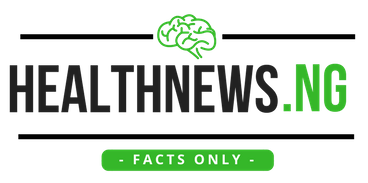Wondering how Nigeria has performed in the fight against HIV/AIDS? Anagbara Jolly breaks down the data…
Nigeria has the second largest HIV epidemic in the world. Although HIV prevalence among adults is remarkably small (2.9%) compared to other sub-Saharan African countries such as South Africa this is despite achieving a 35% reduction in new infections between 2005 and 2013.
Globally, 36.7 million [30.8 million–42.9 million] people were living with HIV in 2016, while approximately 1 million [830 000–1.2 million] people died from AIDS-related illnesses in 2016. In Nigeria, statistics from the National Agency for the Control of AIDS (NACA) shows that 3.2 million people lived with HIV/AIDS in 2016 this includes an estimated 270,000 children (0 to 14 years). While 160 000 deaths were recorded from aids related illnesses.
HIV prevalence is highest in Nigeria’s South South Zone with an alarming 15.2% infection rate from Rivers State. It is lowest in the South East Zone where there is a prevalence of 1.8%, though Ekiti State has the lowest rate of infection. There are higher rates of HIV in rural areas (4%) than in urban ones (3%).
National data suggests that 4.2% of young people (ages 15-24) are living with HIV. Awareness of HIV prevention is higher among young men than women In 2016, more than 46,000 young women were infected with HIV compared to 33,900 young men. This high rate has been attributed to the following factors; increase in number of sex workers and their patronage, illiteracy among those living in rural areas, early sexual debut, unsafe practices among health workers, mother to child transmission and religious orientation.
In 2015, NACA reported that around half (52.7%) of people who inject drugs share needles and syringes. 7.3% share needles and syringes all the time and more than a third (36.4%) shared needles some of the time. Although this is lower than in 2010, helped in part by efforts to reach people who inject drugs with HIV prevention services, these rates remain incredibly high. A key issue to this is that harm reduction services such as opioid substitution therapy and clean needle exchanges are currently not available in Nigeria. Available services are limited to targeted information, education and communication, condom distribution and hepatitis C treatment.
Despite government commitment to the HIV response, punitive laws such as the 2014 anti-homosexuality bill damage progress. Indeed, a worrying rise in HIV prevalence is emerging among men who have sex with men just as punishments for homosexual acts increase, suggesting this group is finding it more and more difficult to access HIV services.
The National Strategic Framework 2017–2021, aims at ending AIDS by achieving zero new infections, zero AIDS related deaths and zero discrimination in Nigeria and to this end, the 2017 World AIDS Day coming up with the theme; my health, my right aims to help the populace realize that everyone, regardless of who they are or where they live, has a right to health, which is also dependent on adequate sanitation and housing, nutritious food, healthy working conditions and access to justice.
The right to health is supported by, and linked to, a wider set of rights. Ending AIDS as a public health threat can only happen if these rights are placed at the center of global health, so that quality health care is available and accessible for everyone and leaves no one behind.
This year’s World AIDS Day campaign focuses on the right to health. The #myrighttohealth campaign will provide information about the right to health and what impact it has on people’s lives. It will also aim to increase the visibility around the need to achieve the full realization of the right to health by everyone, everywhere.


